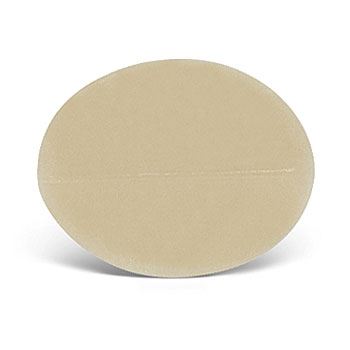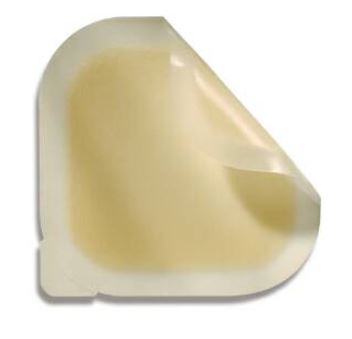DRESSING HYDROCOLLOID, thin, sterile, s.u., small
Valid Article
DRESSING HYDROCOLLOID, thin
Definition
A sterile wound covering, typically made of a hydrocolloid intended to produce a water-absorbent gel upon contact with wound exudate; it does not contain an antimicrobial agent. The device assists in wound healing by absorbing exudate in wounds (e.g., ulcers, burns, surgical wounds, lacerations, abrasions) for minimal wound maceration, allowing wound debridement, and creating a moist wound-healing environment.
Specifications
Quality standards
Technical specifications
- Three-layer dressing:
- Polyurethane film semi-permeable to the outside: liquid-tight (sweat, urine, showers) and exogenous contamination, but allowing gas exchange
- Hydrocolloid based on carboxymethylcellulose (CMC) and gelatin
- Hypoallergenic adhesive sensitive to pressure and covered with a lining
- Semi-transparant
- Does not contain antibiotics or antimicrobial substances
- Absorption capacity: 200 - 300 g / 100 cm² / 24h
- Absence of latex, absence of rosin (resin with properties of sticking and waterproofing but irritating and allergenic to the skin and the respiratory tract)
- Easily adapting to anatomical shapes, may be cut to fit.
- With or without adhesive edge
- Size +/- 4 x 5 cm
- Sterile, for single use
Packaging & Labelling
Each dressing is packed in a disposable peel pack allowing effective sterilization, safe handling, and storage of all pouched items until needed for use and facilitating proper aseptic presentation of the material.
Instructions for use
Precautions for Use
- Inappropriate use or too frequent changes may cause skin irritation
- Do not use on heavily exudating or infected wounds
- Do not use on wounds extending to muscle, tendon or bone and on third degree burns
Storage
- Store below 25°C
- Protect from sunlight ‐ Protect from humidity
MSF requirements
To protect the nostrils of small children when nasal prongs are used.





![[KMEDMHIS22-] (mod ICU) SPECIFIC DRESSINGS complementary 2021](/web/image/product.template/574343/image_256/%5BKMEDMHIS22-%5D%20%28mod%20ICU%29%20SPECIFIC%20DRESSINGS%20complementary%202021?unique=d0e7a85)
![[KMEDMNUTI33] (module nut. inpatient) MEDICAL SUPPLIES 2021](/web/image/product.template/575289/image_256/%5BKMEDMNUTI33%5D%20%28module%20nut.%20inpatient%29%20MEDICAL%20SUPPLIES%202021?unique=a25ea3d)
![[KMEDMNUTO33] (module nut. outpatient) MEDICAL SUPPLIES 2021](/web/image/product.template/575294/image_256/%5BKMEDMNUTO33%5D%20%28module%20nut.%20outpatient%29%20MEDICAL%20SUPPLIES%202021?unique=a25ea3d)